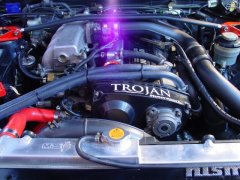Bolt-On Rb25Det And Rb20Det Intercooler Kits, What You Guys Think?
Announcements
-
Similar Content
-
Latest Posts
-
By Watermouse · Posted
Saruthewhite hasn’t been on our site since November 2016 sorry mate -
Note when Duncan says that, he means "when you're not using the correct lifting points on the sills, because you want to work on the sills. A 2 post hoist is not appropriate for everything anyway, and working on the sills is a good example of that, because the arms go under ths sills anyway. You're better off finding another way to support the car off the ground. Beyond that everything else D said is correct. Only the dedicated jacking points are the correct place to lift. Anywhere else is incorrect, extra caution and awareness must be used, etc etc.
-
Your off site links didn't work for me, and in any case it is easier for forum members if you post the pic directly either as an attachment or a link so the information is all in one place. That aside, the sills are the correct place to lift the car, whether with the factory jack or a hoist. Yes you should use rubber blocks with a slit for the seam on a hoist to avoid bending the pinch weld (where yours is currently bent, just bend it back if possible eg vicegrips), and be aware of the height you need in the blocks to clear any sill extensions to the hoist arms as it lifts If what you are doing needs access to the sills, the rear subframe bush would also be strong and secure. I'm not sure what you mean by sidemember (maybe same part I mean by sills) but be careful that your front support point is not too far back as the car is very front heavy and could overbalance.
-
Here's my first iteration - white duct tape so color is off, but this is just a straight line across the bonnet lip. From a geometry standpoint, this is probably closest to what a GTR has. Next up is some $5 white pearl vinyl and some rubber door sill trim, applied to the BACK of the bonnet lip. It's more accurate placement to the GTR, but also follows the body lines on this setup a bit more. Couple more pics on this config incoming: Again, a $5 vinyl and rubber job, it's POC still and not how I'm gonna run this part. But one thing I'll note is that the black trim does need to "straighten out" a bit, and instead of going completely along the line of the bonnet lip, might be better suited to wrap over the "horns" of the bonnet lip, giving it a less aggressive curve up at the ends. The correct way to do this would be to paint it body-matched and then decide how you want to make the black line. If you used paint or a pinstripe, you could have the black line go straight to the corner of the headlight where the rubber strip typically meets the headlight on a GTR. Hope this helps!
-





Recommended Posts
Create an account or sign in to comment
You need to be a member in order to leave a comment
Create an account
Sign up for a new account in our community. It's easy!
Register a new accountSign in
Already have an account? Sign in here.
Sign In Now